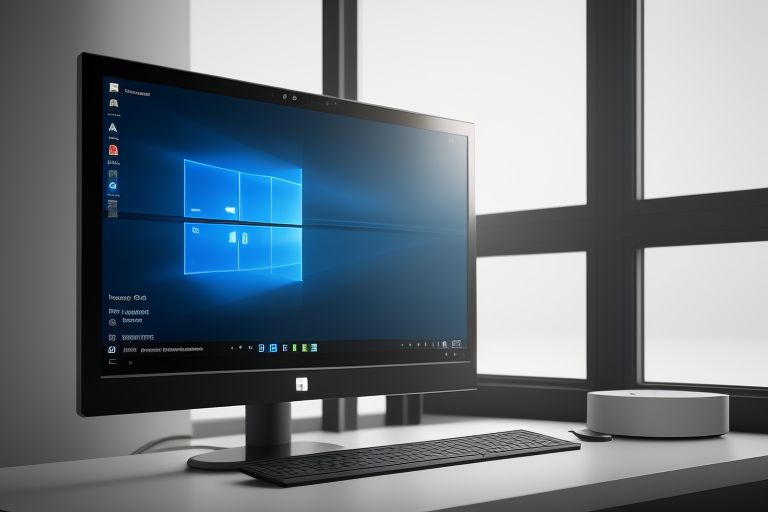By Mahadev Prasad & Last Updated:
Accidentally losing valuable photos can be distressing, whether due to unintended deletion or system glitches. Thankfully, Windows provides several recovery options. Each varies in complexity and effectiveness, so it's crucial to understand all available methods. This guide will delve into four primary techniques for recovering deleted photos on Windows, offering detailed steps to help you restore your cherished memories.
Method 1: Retrieving Photos from the Recycle Bin
The Recycle Bin is your first defense for recovering deleted files on Windows. Deleted photos typically move to the Recycle Bin, giving you a chance to restore them before permanent deletion.
Steps to Recover Photos from the Recycle Bin:
- Open the Recycle Bin:
Double-click the Recycle Bin icon on your desktop. If it's not visible, search for it in the Start menu.
- Find Your Photos:
Browse the files in the Recycle Bin to locate your deleted photos. Use the search bar if you recall the file names.
- Select and Restore:
Select the photos you wish to recover. Hold down the
Ctrlkey to select multiple files. Right-click on them and choose “Restore,” or drag and drop them back to a preferred folder. - Confirm Restoration:
After restoration, check the original location to ensure the files have been successfully recovered.
Note: Files in the Recycle Bin are only retained for a certain time or until the Bin is emptied. If it's been emptied, you'll need to use a different recovery method.

Method 2: Restoring from Backup
Regular backups are essential for data recovery. If you have been backing up your system, you can restore deleted photos from these backups with ease.
Steps to Recover Photos from Backup:
- Connect Backup Storage:
Attach the external storage device (like a USB drive or external hard drive) containing your backup to your computer.
- Access Backup and Restore:
Right-click the Start button and select “Control Panel.” Go to “System and Maintenance” and then click “Backup and Restore.”
- Select Restore Options:
Choose either “Restore my files” or “Restore all users’ files” based on what you need.
- Search for Photos:
Use “Browse for files” or “Browse for folders” to find your deleted photos. Note that individual files might not be visible when browsing folders.
- Recover Files:
Select the files to recover and click “Restore.” The files will be returned to their original location or a new location of your choice.
Tip: Maintain a consistent backup routine to prevent future data loss. Regular backups can alleviate the stress of losing important files.
Method 3: Utilizing Photo Recovery Software
If your photos aren't in the Recycle Bin and you lack a backup, photo recovery software can be highly effective. These tools are designed to recover files that have been permanently deleted.
Recovering Photos with Disk Drill:
- Download and Install:
Obtain Disk Drill from a reputable source and install it on your computer.
- Connect External Devices:
If the photos were on an external device, connect it to your computer.
- Scan for Lost Data:
Open Disk Drill and select the disk or partition where your photos were stored. Click “Search for lost data” to start the scan.
- Preview and Recover:
Once the scan is finished, preview the recoverable photos. Select the ones you wish to restore and click “Recover.”
- Select Save Location:
Choose a location on your computer or external storage to save the recovered photos.
Consideration: Recovery software is most effective if used promptly after deletion. Delaying may increase the risk of files being overwritten.
Method 4: Engaging a Professional Data Recovery Service
If other methods fail, professional data recovery services offer advanced solutions for retrieving lost files. Though costly, these services can often recover data that seems beyond reach.
Steps to Use a Data Recovery Service:
- Find a Reputable Service:
Search for “data recovery services near me.” Review options and customer feedback to select a trustworthy provider.
- Contact the Service:
Consult with the chosen service for instructions on the next steps.
- Prepare Your Storage Media:
Package and send your storage media (hard drive, SSD, etc.) to the data recovery service according to their guidelines.
- Follow Up:
Stay in touch with the service provider for updates on your recovery. They will inform you once the recovery is complete and guide you on retrieving your data.
Note: Choose a data recovery service with a strong track record and a no-recovery-no-fee policy to avoid unnecessary costs.
Conclusion
Recovering deleted photos on Windows involves various methods, each suitable for different situations. Begin with simpler options like the Recycle Bin or backup. If those fail, consider recovery software such as Disk Drill. As a final option, professional data recovery services can assist with seemingly unrecoverable data. By following these steps, you can enhance your chances of successfully retrieving lost photos and preserving your valuable memories.
Maintain regular backups and exercise caution when deleting files to minimize future data loss risks.